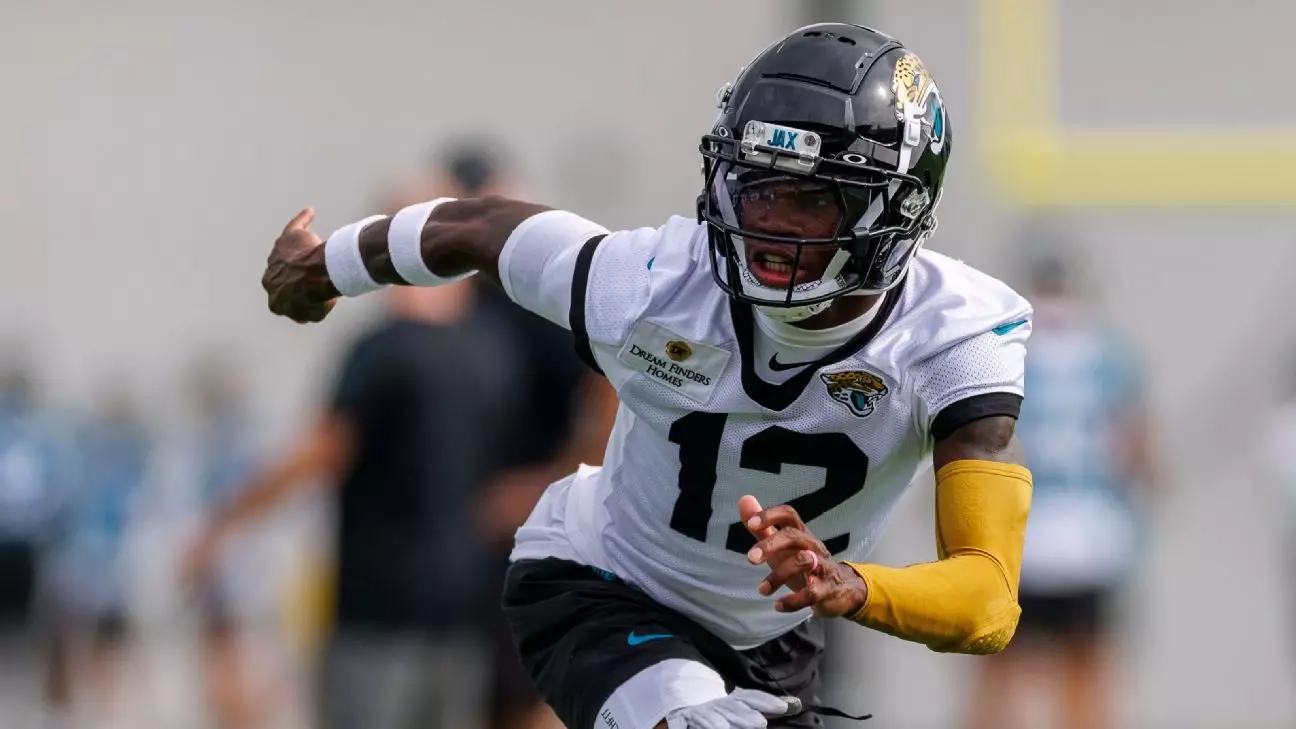In the rapidly evolving landscape of professional football, the idea of a player excelling both offensively and defensively has long been romanticized. Travis Hunter’s case epitomizes this allure, promising an almost mythical figure who defies conventional specialization. However, beneath the surface of this narrative lies a stark reality: the pursuit of unparalleled versatility in the modern game may be more of an illusion than a feasible ambition. While coaches and fans alike laud Hunter’s adaptability as a sign of exceptional talent, we must question whether this pursuit dilutes the core strengths each role demands or unintentionally sets young athletes up for failure.
The notion that a player can seamlessly master both sides of the ball, juggling complex schemes and split-second decisions, sounds appealing. But it glosses over the specialized skills, mental acuity, and physical conditioning necessary for each position. Football at the highest level is less about raw athleticism and more about mastery built through countless hours of focused study and diligent practice. Expecting Hunter—or any dual-role player—to perform at a high level on consecutive days without compromising effectiveness challenges the very foundation of expertise.
Moreover, the assumption that such players can adjust fluidly between offensive and defensive mindsets underpins a dangerous myth: that football is a game of interchangeable parts rather than deeply interconnected specialists. This oversimplification undermines the complexity of each role, risking burnout, injury, or subpar performance if this approach becomes standard rather than exceptional.
The Risks of Pushing Versatility Too Far
From a strategic perspective, coaches’ eagerness to develop multi-purpose players may inadvertently hinder overall team performance. The physical toll alone—multiple positions, different body mechanics, and contrasting mental demands—can lead to fatigue and mental overload. Although Hunter at this stage appears unfazed, pushing young athletes too quickly into dual responsibilities could compromise both their health and their development trajectory.
In practice, the logistics of managing such a workload are also complicated. Coaches must meticulously balance training schedules so that players don’t become overextended, something that becomes increasingly difficult as their responsibilities multiply. There’s a risk that the focus shifts from developing true mastery to merely “getting a player on the field,” which could diminish the quality of play and lead to underwhelming results.
Furthermore, the narrative of Hunter as a pioneering two-way player risks overshadowing the importance of specialized development. The NFL, like any elite league, relies on the precise honing of distinct roles—quarterbacks, pass rushers, receivers—each demanding years of dedicated preparation. Attempting to shortcut this process with a hybrid model may do more harm than good, fostering frustration rather than excellence.
The Reality Check: Are We Settling for Mediocrity in the Name of Innovation?
There’s an uncomfortable truth lurking behind the hype: the obsession with creating a “unicorn” player like Hunter might reflect a deeper desire for innovation, but it also signals a tendency to chase headlines rather than sustainable competitiveness. In embracing the idea that a single athlete can carry multiple roles, are we inadvertently settling for mediocrity across the board?
The aspiration to develop such multi-dimensional talent is understandable; it speaks to a desire for adaptability in an increasingly complex game. Yet, the gamble is whether this approach sacrifices depth for breadth. Football at its core is a game of specialization and strategic nuance. Overloading a player with diverse responsibilities risks diluting both their effectiveness and their enjoyment of the game.
From a broader perspective, this mindset reveals a shift in football culture—one that emphasizes novelty over tradition, individual versatility over team structure. While this can invigorate the sport and create compelling narratives, it also threatens to undermine the tried-and-true development pathways that have historically sustained NFL success.
In closing, the pursuit of over-inflated versatility should be approached with caution. Players like Travis Hunter serve as fascinating case studies—symbols of raw talent and potential. But expecting them to redefine the game’s very fabric is, frankly, an overreach. As fans and analysts, we would do well to recognize the value in specialization, respecting the skill and discipline each role requires, rather than chasing fleeting illusions of the ultimate football hybrid.


Leave a Reply